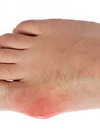
Why can Beetroot turn urine red? The chemistry of beetroot
Article published on 03/11/14 by compoundchem.com
The latest of the food science graphics looks at the chemistry of beetroot. An unusual effect of beetroot is that it can cause ‘beeturia’, or a red colouration to the urine, after ingestion. This is a condition that only affects an estimated 10-14% of the population, so what are the chemical compounds behind it, and why isn’t it a universal effect?
Perhaps unsurprisingly, it’s the compounds that give beetroot its red colour that can also lead to red-coloured urine. Beetroot’s deep red appearance is due to the presence of a class of compounds called betacyanins. This class comprises a number of compounds with similar chemical structures; betanin is a major player as far as colouration goes, and is actually extracted from beetroots and used as a food colouring (named ‘Beetroot Red’ and designated with the E number E162). Another family of compounds present are the betaxanthins. These have a yellow colour independently, and are present in lower concentrations than the betacyanins.
Betacyanins can cause beeturia because they don’t always break down in the digestive system of some people. The reasons for this are still a little uncertain; it has been suggested that, at low stomach acid pH, the compounds are broken down, and that when the stomach acid is not as strong, this does not occur. Therefore, the compounds are able to pass through the remainder of the digestive system, absorbed through the intestinal walls in the colon into the bloodstream, then filtered out by the kidneys and into the urine. Of course, some of the unmetabolised compound may well remain in the colon and wind up giving the delightful effect of purple poo.
It’s possible that the breakdown of these compounds could also be influenced by genetic factors which have yet to be precisely determined. For example, if a person genetically has a stronger acidity in their stomach, they may well break the compound down effectively and never experience beeturia. In another interesting suggestion, beeturia has been potentially linked to being an early indicator of haemochromatosis (over-accumulation of iron in the body).
Why isn’t beetroot dye broken down by digestion?
Article published on 29/11/09 by thenakedscientists.com
Well, in some people it is, but in some people it isn’t. The chemical that’s in beetroot that makes them red and makes some people wee red and also pass red faeces, which is what can happen if you eat a lot of beetroot, is a chemical called betacyanin. It’s actually an anti-oxidant that the beetroot makes and it can be used a colour change indicator too, but it doesn’t necessarily breakdown in the intestines of all people.
The things that seem to make it breakdown more are acidity, so if you have very strong stomach acid then it breaks down more. If you have weaker stomach acid, then more can get through into the small intestine, and there, pancreatic juice is alkaline. So that can encourage it to pass through into the colon which is actually where it’s absorbed.
People have done experiments on patients who have had things called ileostomies, which is where you take the ileum, the terminal bowel, and you bring it to the surface of the skin. And you take the contents away into a bag, for example. If you feed these patients with the betacyanins in beetroot they don’t ever get beeturia, in other words, the red dye getting into their urine. That shows that the absorption must take place in the large intestine.
The other things that seem to affect the absorption is a chemical called oxalate, oxalic acid, which you get from rhubarb and rhubarb leaves. That actually gets broken down by bacteria in the small intestine and in the large bowel. So it’s possible that there’s a combined effect whereby some people have a certain genetic makeup that makes them break this stuff down more than others because they have more acidity. It’s also possible that they have certain bacteria living in the intestine that breaks this stuff down more than others, and so that affects whether or not you see it appearing in the bloodstream.




